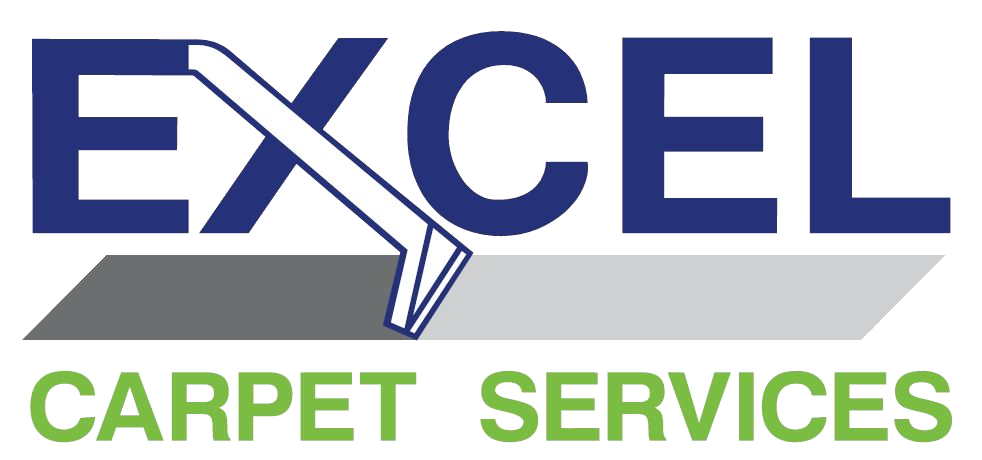Professional upholstery cleaning removes embedded dirt and allergens to enhance indoor air quality and restore furniture aesthetics. Treating sofas, chairs, and other upholstered pieces with hot water extraction and eco-friendly solutions extends lifespan and revives appearance. Local expertise in Cincinnati ensures timely service, personalized care, and community trust. In this article, we explore the key benefits of professional upholstery cleaning, detail our step-by-step process, outline the range of fabrics and furniture we handle, explain pet-stain and odor removal strategies, break down cost factors, highlight the advantages of choosing Cincinnati experts, and answer your most pressing questions about upholstery care.
What Are the Key Benefits of Professional Upholstery Cleaning in Cincinnati?
Professional upholstery cleaning delivers deep soil extraction, fabric protection, and allergen elimination to improve home health and furniture longevity. Understanding these advantages guides homeowners, businesses, and property managers toward cleaner, more durable furnishings.
How Does Upholstery Cleaning Improve Indoor Air Quality?
Professional upholstery cleaning involves targeted removal of dust mites, pet dander, and pollen trapped in fabric fibers, which significantly reduces airborne irritants and promotes respiratory wellness. By injecting heated, low-moisture cleaning solutions into upholstery and extracting contaminants, certified technicians eliminate up to 98% of microscopic allergens. As a result, residents experience fewer allergy flare-ups and breathe cleaner air—laying the foundation for healthier indoor environments.
A study utilizing hot carbonating extraction technology demonstrated that professional upholstery cleaning can remove up to 98.1% of common household allergens, including dust mites and pet dander. This process significantly contributes to improved indoor air quality and reduces triggers for allergies and asthma.
In What Ways Does Professional Cleaning Extend Furniture Lifespan?
Professional cleaning preserves upholstery integrity by preventing fiber abrasion and color fading through safe, pH-balanced treatments that reinforce fabric strength. During service, technicians apply specialized fabric protectors that inhibit future soil adherence and UV-induced discoloration. This protective barrier reduces wear and tear over time, helping sofas, chairs, and cushions maintain structural resilience and appearance for years—ensuring a more cost-effective investment in your furniture.
Professional upholstery cleaning extends the lifespan of furniture by effectively removing abrasive dirt, dust, and contaminants embedded in fabric fibers, which are known to cause wear and tear. This process helps preserve the integrity of upholstery and allows for the application of protective treatments to prevent future staining and deterioration.
How Does Upholstery Cleaning Restore Appearance and Remove Stains?
Deep cleaning techniques lift embedded dirt and dissolve oil-based spills, while enzymatic and oxygenated agents break down organic stains and neutralize odors at the source. A targeted pre-treatment identifies stain types—ink, wine, grease, or pet accidents—and applies bespoke spotting solutions before full extraction. This combination of stain-specific chemistry and hot water extraction restores color vibrancy, removes lingering odors, and returns furniture to its original aesthetic, revitalizing any living or working space.
How Does Our Professional Upholstery Cleaning Process Work?
Our five-stage upholstery cleaning process ensures fabric safety, thorough soil removal, and lasting protection. Each step is designed to address unique material needs and deliver consistent results across all upholstered items.
What Steps Are Involved in Fabric Inspection and Identification?
Fabric inspection begins with a detailed assessment of fiber composition, weave pattern, and manufacturer tags to determine appropriate cleaning methods. Technicians evaluate fabric pH tolerance, dye stability, and structural integrity to select hot water extraction, steam cleaning, or dry cleaning protocols. By aligning treatment with fabric properties, we prevent damage and maximize cleaning efficiency—setting the stage for effective stain and soil removal.
How Are Pre-Treatment and Spot Cleaning Applied?
Pre-treatment employs diluted enzymatic or surfactant-based solutions to break down protein, oil, and tannin stains before full extraction. After applying the appropriate spotting agent, technicians gently agitate the area with soft brushes or pads to penetrate fibers without abrasion. This targeted approach lifts stubborn spots—such as coffee rings or food spills—making them easier to remove during deep cleaning and preserving overall fabric quality.
What Deep Cleaning Methods Do We Use?
Our deep cleaning combines hot water extraction, low-moisture encapsulation, and dry solvent cleaning to accommodate different upholstery types:
| Cleaning Method | Mechanism | Ideal for |
|---|---|---|
| Hot Water Extraction | Injects heated solution and extracts with high-pressure suction | Stain-resistant synthetic fabrics |
| Steam Cleaning | Uses vapor to loosen soil without chemicals | Delicate natural fibers (silk, wool) |
| Dry Cleaning | Applies solvent-based compounds and vacuums residue | Water-sensitive upholstery |
How Is Drying and Post-Cleaning Fabric Protection Managed?
After extraction, controlled airflow and dehumidification accelerate drying without overheating fibers, preventing shrinkage and mildew formation. Once fabrics reach safe moisture thresholds, technicians apply a protective sealant that repels future spills and UV exposure. This final stage locks in cleanliness and reinforces fabric durability—ensuring furniture remains fresh and safeguarded until its next professional maintenance.
Which Types of Upholstery and Fabrics Do We Clean Locally?
Our Cincinnati upholstery cleaning experts handle a broad spectrum of fabrics and furniture, accommodating both residential and commercial environments. An illustrative table highlights our specialization.
| Fabric Type | Cleaning Approach | Drying Time |
|---|---|---|
| Microfiber | Low-moisture encapsulation | 2–3 hours |
| Velvet | Gentle steam cleaning with soft brushes | 4–6 hours |
| Cotton | Hot water extraction with pH-balanced agents | 3–5 hours |
| Leather | pH-balanced leather cleaner and conditioner | 1–2 hours |
How Do We Clean Common Fabrics Like Microfiber, Velvet, and Cotton?
- Inspect fiber density and pile orientation.
- Pre-treat organic and oil-based spots with gentle surfactants.
- Choose low-moisture or hot water extraction based on fabric resilience.
- Rinse and extract contaminants fully to prevent residue.
This comprehensive method deepens cleanliness while preserving fabric softness and color integrity, making it suitable for busy households and high-traffic commercial spaces.
What Specialized Care Is Needed for Leather Upholstery?
Leather requires solvent-based cleaning that dissolves surface oils without stripping natural moisture, followed by application of a conditioning agent that replenishes essential fats and protects against cracking. Technicians perform a leather pH test, use soft microfiber pads to apply mild cleaners, and finish with a nutritionally balanced leather conditioner. By restoring natural oils and sealing pores, this approach enhances suppleness, prevents premature aging, and retains the distinctive luster of fine leather furniture.
Can We Clean Different Furniture Types Like Sofas, Chairs, and Mattresses?
Yes, our equipment and techniques adapt to various furniture shapes and sizes, from sectional sofas and reclining chairs to mattress surfaces. Portable extraction wands reach deep seams and tight corners, while adjustable nozzles handle large cushions and flat mattress tops. This versatility ensures each upholstered item—from living room seating to bedroom mattresses—receives thorough, fabric-safe treatment that extends comfort and longevity.
How Do Local Upholstery Cleaning Services Address Pet Stains and Odors?
Pet accidents often leave protein-based residues and ammonia odors that standard cleaners cannot fully eliminate. Professional services deploy enzymatic agents and specialized extraction to target these contaminants at a molecular level, restoring freshness and hygiene.
What Techniques Remove Pet Odors from Upholstered Furniture?
Enzymatic cleaners break down urine and dander molecules, while high-pressure steam or extraction removes both solution and dissolved residues. By combining odor-neutralizing sprays with deep-penetrating cleaning, technicians eradicate underlying ammonia and bacterial byproducts—eliminating odor sources rather than masking them. This dual approach ensures upholstery remains pet-friendly and odor-free for weeks after service.
Enzyme-based cleaners are highly effective in eliminating pet odors and stains because they break down organic compounds, such as uric acid crystals, at a molecular level. Unlike traditional cleaners that merely mask odors, enzymatic solutions digest the odor-causing substances, ensuring complete removal.
How Are Pet Stains Like Urine and Vomit Effectively Treated?
Pet stains undergo a tri-step treatment:
- Rapid blotting to absorb excess moisture.
- Enzyme pre-treatment to hydrolyze organic matter.
- Hot water extraction to lift both stain and treatment solution entirely.
This sequence removes proteins and pigmented residues while preventing color bleeding and fiber matting—helping fabrics regain uniform appearance without lingering discoloration.
Are Pet-Friendly and Non-Toxic Cleaning Solutions Available?
Yes, we offer biodegradable, non-toxic cleaning formulations that eliminate harsh chemicals and safeguard pets, children, and sensitive individuals. These eco-friendly solutions use plant-derived surfactants and natural enzymes to clean and deodorize. As a result, upholstery is free from chemical residues, and indoor air remains safe—supporting health and environmental responsibility.
What Factors Influence Upholstery Cleaning Costs in Cincinnati?
Upholstery cleaning pricing varies according to furniture size, fabric type, stain severity, and choice of cleaning method. Transparent cost breakdowns empower customers to budget accurately and avoid unexpected charges.
| Cost Factor | Attribute | Impact on Price |
|---|---|---|
| Furniture Size | Surface area (sq ft) | Larger pieces require more solution and time |
| Fabric Type | Material sensitivity | Delicate fabrics may need specialized methods |
| Stain Severity | Number and type of spots | Tough, set-in stains add labor and treatment costs |
How Does Furniture Size and Fabric Type Affect Pricing?
Cleaning extensive sectional sofas or oversized mattresses involves additional labor, equipment setup, and solution volumes, increasing overall cost. Similarly, high-maintenance fabrics—such as silk blends or specialized leathers—require extra pre-treatment and protective finishes. By aligning price with effort and materials used, our estimates reflect fair value and quality workmanship.
What Role Do Stain Severity and Cleaning Methods Play in Cost?
Deep-set stains often demand multiple pre-treatment applications and extended dwell times, while premium cleaning methods—such as low-moisture encapsulation or steam sanitization—incur higher operational expenses. Customers receive transparent breakdowns showing per-stain labor rates and method fees, enabling informed decisions between basic maintenance and intensive restoration services.
How Can Customers Get Transparent Quotes and Estimates?
Clients can schedule free in-home consultations or submit photos via our website to receive itemized digital quotes within 24 hours. We document each furniture piece’s dimensions, fabric type, and visible blemishes to generate accurate estimates. This streamlined process promotes trust, prevents surprises, and guides customers toward the service package that best suits their needs.
Why Choose Local Upholstery Cleaning Experts in Cincinnati?
Partnering with Cincinnati-based upholstery cleaners delivers community-focused service, rapid response times, and deep knowledge of local fabric suppliers and environmental conditions. Local experts combine certification, advanced techniques, and health-driven care for tangible results.
What Local Expertise and Community Knowledge Do We Offer?
With years of serving Greater Cincinnati neighborhoods—from Oakley to Hyde Park—our technicians understand regional soil profiles, seasonal pollen cycles, and common household fabrics. This hyper-local insight allows us to recommend ideal cleaning schedules, fabric protection plans, and seasonal maintenance to combat climate-related wear, ensuring upholstery remains fresh year-round.
How Do Certified Technicians Ensure Professional Results?
Our team holds IICRC certifications in upholstery cleaning, carpet care, and stain removal, applying industry-standard protocols for every job. Ongoing training in the latest extraction equipment, eco-friendly chemistries, and textile preservation techniques guarantees that each service surpasses conventional approaches—resulting in deeper cleanliness, longer fabric life, and safer indoor environments.
How Does Our Service Prioritize Health and Customer Satisfaction?
We prioritize allergen removal, pet-safe solutions, and post-service air quality verification using industry-grade moisture meters and odor sensors. Customer satisfaction is reinforced by documented before-and-after photos, 100% satisfaction guarantees, and follow-up consultations to address any concerns. This commitment to health and service excellence builds trust and long-term relationships within Cincinnati communities.
What Are the Most Common Questions About Upholstery Cleaning in Cincinnati?
Answering frequent inquiries helps customers plan maintenance, choose eco-friendly options, and anticipate service duration. Below are concise, expert responses to the top local upholstery cleaning concerns.
How Often Should Upholstered Furniture Be Professionally Cleaned?
Manufacturers generally recommend professional cleaning every 12–24 months, with more frequent service advised for homes with children, pets, or allergy sufferers. Regular maintenance prevents allergen buildup and fabric degradation, promoting both health and durability.
Can Professional Cleaning Remove All Types of Stains and Odors?
Yes, professional upholstery cleaning employs customized stain-specific treatments and enzymatic deodorizers that break down a wide range of organic and inorganic soils. While most stains and odors respond fully to this process, extremely severe discolorations may require additional spot treatments or fabric repair.
What Are the Benefits of Eco-Friendly Upholstery Cleaning?
Eco-friendly cleaning uses plant-derived surfactants and natural enzymes to remove soils without harsh chemicals, reducing VOC emissions and chemical residues. This approach supports indoor air quality, protects sensitive occupants, and aligns with sustainable living standards.
How Long Does Upholstery Cleaning Take and When Can Furniture Be Used?
Typical cleaning sessions last 1–2 hours per furniture piece, with drying times ranging from 1 to 6 hours based on fabric type and environmental humidity. Most upholstery is safe for normal use within 4 hours, while denser fabrics may require overnight drying to ensure complete moisture removal.
Professional upholstery cleaning in Cincinnati delivers measurable health, aesthetic, and longevity benefits by eliminating allergens, protecting fabrics, and revitalizing furniture appearance. Engaging certified local experts guarantees tailored service, transparent pricing, and eco-friendly solutions that align with homeowner and business needs. For fresher indoor air, extended furniture life, and a truly renewed seating experience, schedule your next upholstery cleaning with Cincinnati’s trusted professionals.



